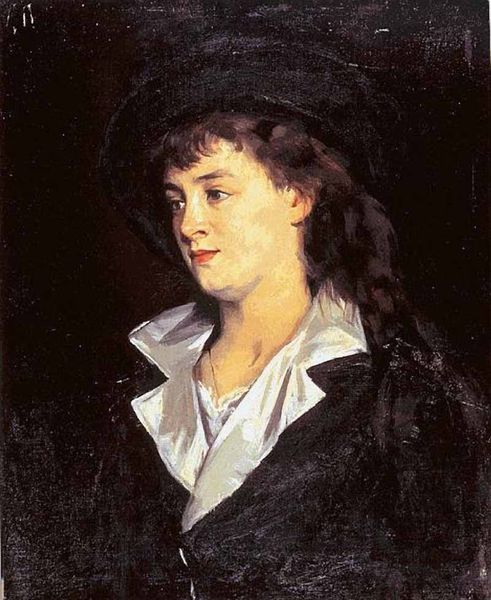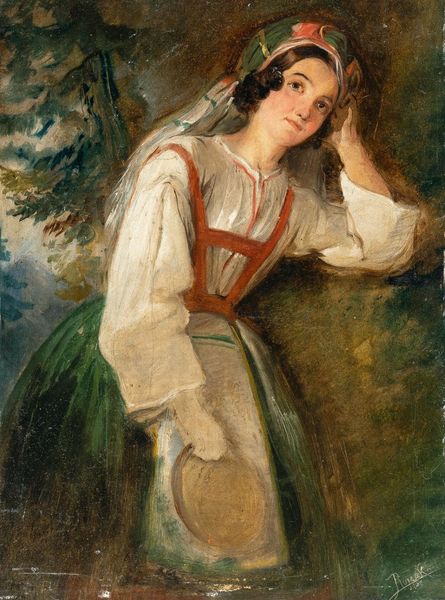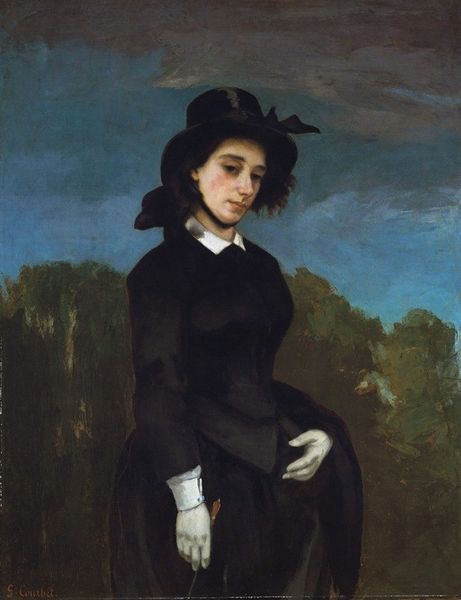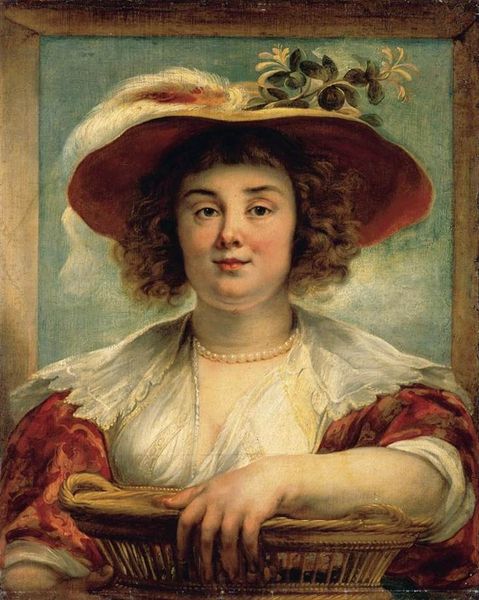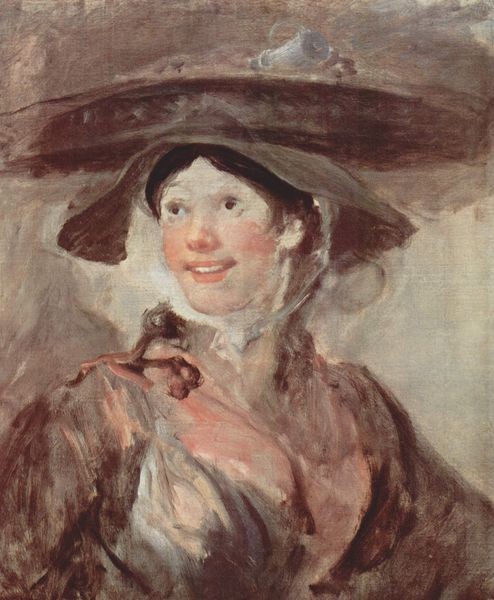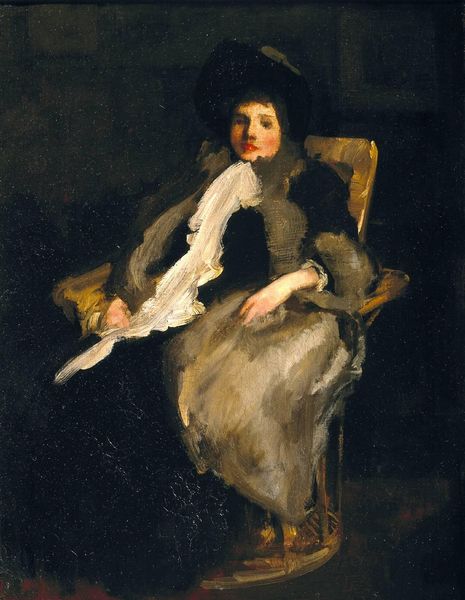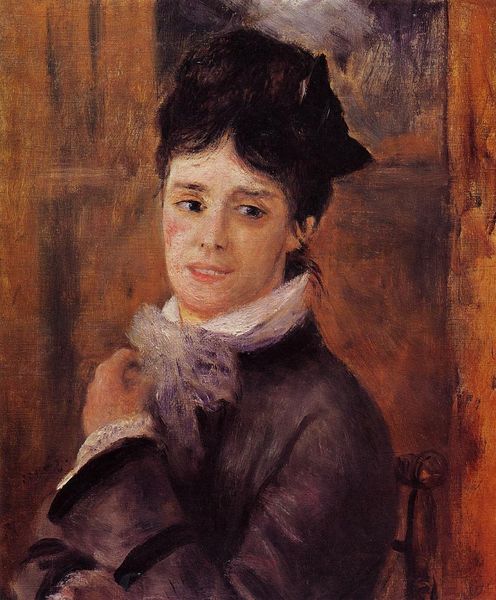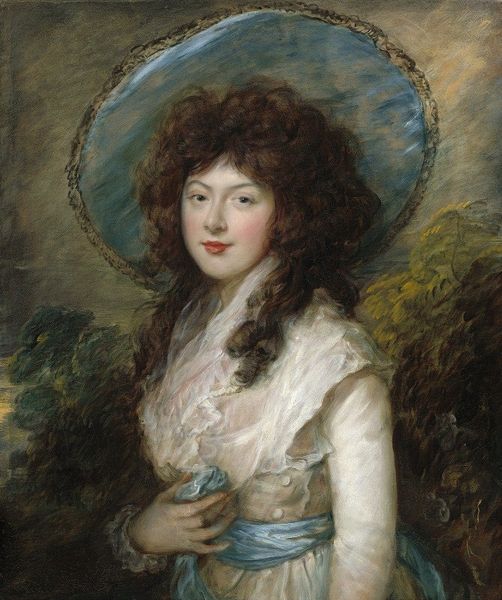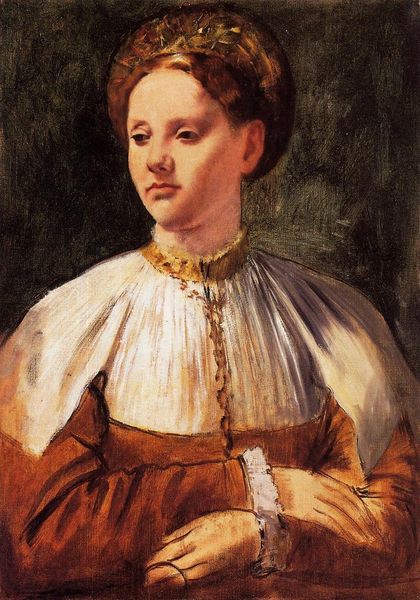
Copyright: Public domain
Curator: Standing before us is "Miss L., aka Isabella Lathrop," an oil-on-canvas portrait completed by William Merritt Chase in 1913. It resides in a private collection. Editor: Wow, she’s radiating a subtle defiance! The dark, almost theatrical costuming and those knowing eyes...there's something beautifully anachronistic about her presence here. Like a mischievous character escaped from an 18th-century novel. Curator: That resonates! Consider Chase’s Impressionistic plein-air technique—applied to a formal portrait. It hints at shifting identities and performances. We need to think about class and gender here; how are those roles being both adopted and subverted? The slightly androgynous attire could be read through the lens of evolving gender dynamics during the early 20th century. Editor: Absolutely. I see that tension too. There's an interesting looseness about her. It's the kind of portrait that suggests there are depths—stories simmering beneath the surface. You get the sense that any moment now, she's going to break character and just start laughing, you know? Curator: And it might be connected to Chase's engagement with European realism—it wasn’t simply about faithful depiction; it was often used to analyze and critique social realities. The background dissolves into soft focus, pulling all the attention to Isabella and creating a contrast, and therefore emphasis, that focuses more intensely on her social presentation, both in clothing, pose, and expression. Editor: That reminds me of how artists would intentionally blur the lines between portraiture and genre painting. Is she being 'presented' as a painting, or captured as a person? In this one painting, she somehow looks poised but relaxed, defiant and yielding—I suppose, simply, like a human! And I just like looking at her. Curator: Exactly! We need to move beyond thinking about her just as the ‘subject’ or even as a woman; rather, consider the intersectional relationships she and Chase are establishing—what are the broader historical narratives? The work allows for interpretations on representation, identity, and social discourse of the period. Editor: Yes. It’s really cool when a work feels less like it’s making a statement and more like it’s holding open a question for the viewer to answer. Curator: Well said. "Miss L" remains a potent articulation of historical contexts viewed through artistic practice, offering valuable insights into early twentieth-century intersectional understanding. Editor: True. It’s as though this Miss L stepped right out of one of those social theories you mentioned and said: "Well? What are you going to make of me?"
Comments
No comments
Be the first to comment and join the conversation on the ultimate creative platform.



